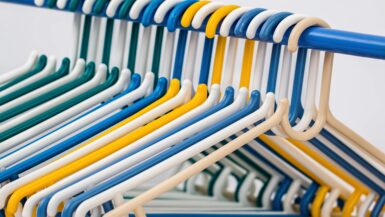In today’s world, the pervasive issue of plastic pollution has garnered significant attention, posing a severe threat to our planet’s wildlife. As we strive to lead a plastic-free lifestyle, it is crucial to delve into the scientific aspects of plastic pollution and understand its profound implications on the natural world. In this article, we will explore the origin and composition of plastic, its accumulation in the environment, and the catastrophic impact it has on wildlife, from entanglement to ingestion. Moreover, we will discuss the bioaccumulation and biomagnification of toxins in the food chain, which ultimately affect human health. By comprehending the science behind plastic pollution, we can empower ourselves to take meaningful action and contribute to a sustainable future for all living beings.
The Devastating Impact of Microplastics on Marine Ecosystems
The term “microplastics” refers to tiny plastic particles that are less than 5 millimeters in size. These minuscule pollutants, either intentionally manufactured or formed through the breakdown of larger plastic waste, have infiltrated marine ecosystems around the globe. This section will explore the sources of microplastics, how they accumulate and disperse in the environment, and the ways in which they wreak havoc on marine life, disrupting biological processes and threatening the health of entire ecosystems.
Origins and Distribution of Microplastics in the Oceans
Microplastics can originate from various sources, including microbeads found in personal care products, fibers from synthetic textiles, and fragments from larger plastic debris that has disintegrated due to weathering and UV radiation exposure. These particles enter the ocean through wastewater discharge, stormwater runoff, or wind transport. Once in the marine environment, microplastics are widely dispersed by ocean currents, eventually making their way into the food web and posing a threat to a diverse range of aquatic species.
Microplastics as Vectors for Toxins and Pathogens
One of the primary concerns regarding microplastics is their ability to accumulate and transport toxic chemicals, such as persistent organic pollutants (POPs) and heavy metals. These contaminants can adsorb onto the surface of microplastics, which then act as vectors for their transfer to marine organisms that ingest them. Additionally, microplastics can harbor harmful pathogens, providing a novel pathway for the spread of diseases in the marine environment.
Impacts on Marine Species and Food Webs
The ingestion of microplastics by marine organisms, either directly or indirectly through the consumption of prey containing microplastics, can lead to a multitude of adverse effects. These include physical damage to the digestive tract, reduced feeding, and impaired reproduction and growth. Moreover, the accumulation of toxins associated with microplastics can result in bioaccumulation and biomagnification, causing detrimental impacts on higher trophic levels, such as seabirds, marine mammals, and even humans. The disruption of marine food webs by microplastics poses significant risks to ecosystem stability and biodiversity.
Addressing the Microplastics Crisis
To mitigate the devastating impacts of microplastics on marine ecosystems, it is essential to tackle the root cause: our reliance on single-use plastics and the subsequent pollution resulting from improper waste management. By implementing policies to reduce plastic production and consumption, promoting eco-friendly alternatives, and enhancing waste management practices, we can strive to curb the influx of microplastics into the oceans. Furthermore, research and innovation in microplastic detection and removal technologies will be crucial in addressing the existing contamination levels and preserving the health of our marine ecosystems.
How Plastic Pollutants Disrupt Wildlife Reproduction and Growth
Plastic pollution poses a myriad of threats to wildlife, with one of the most concerning being its impact on reproduction and growth. This section will delve into the mechanisms by which plastic pollutants interfere with these vital processes in various species, as well as the potential consequences for population dynamics and ecosystem stability. By understanding these complex interactions, we can better evaluate the severity of the plastic pollution crisis and devise effective strategies to mitigate its detrimental effects on wildlife.
Entanglement in Plastic Debris: A Physical Barrier to Reproductive Success
One of the most direct ways in which plastic pollution can disrupt reproduction is through entanglement. Marine animals such as seals, turtles, and birds can become entangled in discarded fishing nets, plastic bags, or other debris, resulting in injury, impaired mobility, or even death. Entangled animals may struggle to find food, evade predators, or engage in mating behaviors, leading to reduced reproductive success and population decline.
Endocrine Disruptors: The Invisible Threat of Plastic Pollutants
Plastic pollution also poses a more insidious threat to wildlife reproduction and growth through the release of endocrine-disrupting chemicals (EDCs). EDCs are substances that can interfere with the hormonal systems of organisms, leading to a range of adverse effects on reproduction, development, and immune function. Many plastic products contain chemicals, such as bisphenol A (BPA) and phthalates, that can leach into the environment and act as EDCs. These substances can bioaccumulate in the tissues of animals, potentially disrupting reproductive processes and causing developmental abnormalities.
Microplastics and Trophic Transfer: A Pathway for Reproductive Disruption
As discussed earlier, microplastics are pervasive in marine ecosystems and can be ingested by a wide range of organisms. In addition to the physical harm caused by ingesting these particles, microplastics can also serve as vectors for the transfer of EDCs and other harmful substances through the food chain. As these contaminants accumulate in the tissues of animals at higher trophic levels, they can magnify the negative effects on reproduction and growth, ultimately impacting the health and stability of entire ecosystems.
Indirect Effects on Reproduction and Growth: Altered Food Webs and Habitats
Plastic pollution can also indirectly influence wildlife reproduction and growth by altering food webs and habitat quality. For instance, plastic debris can introduce invasive species to new ecosystems or provide a substrate for the growth of harmful algae, leading to shifts in community structure and resource availability. These changes can, in turn, affect the reproductive success and growth rates of various species by altering their access to food, shelter, or suitable breeding sites.
Combating the Impact of Plastic Pollutants on Wildlife Reproduction and Growth
Addressing the impacts of plastic pollution on wildlife reproduction and growth requires a multifaceted approach, which includes reducing plastic production and consumption, improving waste management practices, and restoring impacted habitats. Additionally, further research is needed to better understand the complex interactions between plastic pollution and wildlife health, as well as to develop innovative solutions for mitigating plastic pollution’s harmful effects on the natural world. By working together, we can strive to protect and preserve our planet’s diverse ecosystems and the countless species that depend on them for survival.
The Role of Oceanic Gyres in the Accumulation of Plastic Debris
Oceanic gyres play a critical role in the sequestration and distribution of plastic pollution in the marine environment. These massive, rotating systems of ocean currents collect and trap vast quantities of plastic debris, forming large accumulations known as garbage patches. In this section, we will delve into the formation and characteristics of oceanic gyres, examine their role in the concentration and transport of plastic pollution, and discuss the potential ecological impacts of these garbage patches on marine wildlife.
Formation and Characteristics of Oceanic Gyres
Gyres are formed by the interaction of prevailing wind patterns and the Earth’s rotation, resulting in circular currents that circulate water and its contents around the ocean basins. There are five major oceanic gyres: the North Atlantic, South Atlantic, North Pacific, South Pacific, and Indian Ocean gyres. These systems are characterized by a central zone of calm water, known as the convergence zone, where floating debris tends to accumulate due to the converging currents.
Plastic Accumulation in Garbage Patches
The convergence zones of oceanic gyres serve as collection points for plastic debris, which becomes entrapped and concentrated within these circulating currents. Over time, the accumulation of plastic particles forms vast garbage patches that can span thousands of square kilometers. The most well-known example of such an accumulation is the Great Pacific Garbage Patch, located within the North Pacific Gyre. These garbage patches primarily consist of buoyant, slow-degrading plastics, such as polyethylene and polypropylene, which can persist in the environment for decades or even centuries.
Transport and Distribution of Plastic Pollution by Gyres
In addition to concentrating plastic debris within garbage patches, oceanic gyres also play a role in the distribution and transport of plastic pollution throughout the marine environment. Gyres can act as vectors for the long-range transport of plastic particles, carrying them across vast distances and even between ocean basins. This dispersion of plastic debris can lead to the contamination of remote ecosystems, such as deep-sea habitats and polar regions, where it poses a threat to the health and well-being of local wildlife.
Ecological Impacts of Garbage Patches on Marine Wildlife
The presence of garbage patches in oceanic gyres can have severe ecological consequences for marine wildlife. Animals may become entangled in large plastic debris, leading to injury or death, while smaller particles may be ingested by a wide range of organisms, causing physical harm or introducing toxins into the food chain. Furthermore, the accumulation of plastic debris in garbage patches can alter the distribution and abundance of marine life, as well as disrupt local food web dynamics, by providing a substrate for the growth of harmful algae or invasive species.
Addressing the Role of Oceanic Gyres in Plastic Pollution
Tackling the issue of plastic pollution in oceanic gyres requires a comprehensive approach that targets the root causes of plastic waste production and improper disposal. Efforts should focus on reducing the consumption of single-use plastics, promoting sustainable alternatives, and improving waste management practices to prevent the entry of plastic debris into the marine environment. Additionally, research and development of innovative technologies for the detection, removal, and recycling of plastic pollution within gyres can contribute to the mitigation of this global environmental challenge. By taking decisive action, we can work towards a future where our oceans are free from the burden of plastic pollution and its detrimental effects on marine ecosystems and wildlife.
Plastic Pollution’s Contribution to Greenhouse Gas Emissions
In recent years, the role of plastic pollution in exacerbating climate change has become increasingly apparent. In this section, we will explore the various ways in which plastic production, usage, and disposal contribute to global greenhouse gas emissions, and discuss the implications of this connection for wildlife and ecosystems. Understanding the link between plastic pollution and climate change is crucial for devising comprehensive strategies to mitigate the environmental impacts of our plastic-dependent society.
Greenhouse Gas Emissions from Plastic Production and Usage
The production of plastic materials relies heavily on the extraction and processing of fossil fuels, such as crude oil and natural gas. These processes are energy-intensive and generate significant amounts of carbon dioxide (CO2) and other greenhouse gases. Furthermore, the use of plastics in various sectors, including transportation, packaging, and construction, often contributes to increased energy consumption and associated emissions. For instance, the production of lightweight plastic packaging may require less energy than alternative materials, but the increased demand for single-use plastics can offset these savings, leading to a net increase in emissions.
Greenhouse Gas Emissions from Plastic Waste Management
The disposal and management of plastic waste also contribute to greenhouse gas emissions. Landfilling, the most common waste management method, results in the release of methane, a potent greenhouse gas, as plastic materials decompose anaerobically. Incineration, another common method for plastic waste disposal, generates CO2 emissions from the combustion of fossil fuel-based plastics. While modern incineration facilities can harness the energy produced during combustion for electricity generation, this process still contributes to overall greenhouse gas emissions. Lastly, recycling, which is often considered a more environmentally friendly option, still generates emissions due to the energy required for collection, transportation, and reprocessing of plastic materials.
Indirect Impacts of Greenhouse Gas Emissions on Wildlife
The contribution of plastic pollution to greenhouse gas emissions has indirect consequences for wildlife and ecosystems. As global temperatures rise due to climate change, species are forced to adapt to changing environmental conditions, such as altered precipitation patterns, ocean acidification, and shifts in resource availability. These changes can disrupt ecosystems, leading to the loss of biodiversity, altered food web dynamics, and increased vulnerability to disease and other stressors. In turn, these ecological shifts can have cascading effects on the distribution, reproduction, and survival of various species, including those already impacted by plastic pollution.
Reducing the Climate Impacts of Plastic Pollution
Addressing the climate-related consequences of plastic pollution necessitates a multifaceted approach that targets both plastic production and waste management. This includes promoting the development and adoption of renewable, bio-based plastics, which can reduce the reliance on fossil fuels and associated emissions. Additionally, enhancing waste management practices, such as increasing recycling rates and utilizing advanced technologies for energy recovery, can help to minimize the climate impacts of plastic disposal. Finally, reducing overall plastic consumption, particularly of single-use items, is essential for mitigating the greenhouse gas emissions associated with plastic production and usage. By addressing the climate impacts of plastic pollution, we can work towards a more sustainable future for both our planet and its diverse wildlife populations.
The Effects of Ingested Plastics on Aquatic and Terrestrial Species
The ingestion of plastic debris by wildlife is a pervasive and concerning issue, with far-reaching implications for both aquatic and terrestrial species. When animals consume plastic, they can suffer from a multitude of harmful effects, including physical injury, impaired digestion, and exposure to toxic chemicals. In this section, we will delve into the various ways in which ingested plastics impact the health and well-being of diverse species and the potential consequences for ecosystems and food webs.
Mechanical Damage and Obstruction Caused by Ingested Plastics
One of the most immediate dangers of ingesting plastic debris is the potential for physical injury and obstruction within the gastrointestinal tract. Larger plastic items, such as plastic bags or fishing line, can cause blockages or perforations in the digestive system, while smaller particles may accumulate and lead to inflammation or ulceration. These injuries can impair an animal’s ability to feed and digest food, resulting in malnutrition, reduced growth, and even death.
Reduced Nutrient Uptake and Starvation
When animals consume plastic particles, their digestive systems can become full, leading to a false sense of satiety. As a result, they may consume less food, ultimately leading to malnutrition and starvation. This is particularly concerning for species with specialized diets, such as filter feeders, which may inadvertently ingest microplastics alongside their natural prey.
Bioaccumulation of Toxic Chemicals
Ingested plastics can also serve as a source of harmful chemicals, which can accumulate in an animal’s tissues and cause adverse health effects. These chemicals, including endocrine-disrupting compounds like bisphenol A (BPA) and phthalates, can interfere with an organism’s hormonal systems, leading to reproductive issues, impaired development, and weakened immune responses. Moreover, as these toxins bioaccumulate and biomagnify through the food chain, they can have detrimental effects on higher trophic levels, including humans.
Implications for Ecosystems and Food Webs
The impacts of ingested plastics on individual species can have cascading effects on entire ecosystems and food webs. As affected animals experience reduced reproductive success, population decline, and altered foraging behavior, the balance of ecosystems can be disrupted. This can lead to changes in species distribution, predator-prey dynamics, and resource availability, ultimately threatening the health and stability of diverse ecosystems.
Addressing the Effects of Ingested Plastics on Wildlife
To mitigate the harmful impacts of ingested plastics on aquatic and terrestrial species, it is imperative to confront the root causes of plastic pollution. This includes reducing the production and consumption of single-use plastics, promoting eco-friendly alternatives, and improving waste management practices to minimize the release of plastic debris into the environment. Additionally, further research is needed to better understand the complex interactions between ingested plastics and wildlife health, as well as to develop innovative solutions for plastic pollution mitigation. By taking decisive action, we can strive to protect our planet’s diverse ecosystems and the countless species that depend on them for survival.





Leave a reply